B2B Sales Strategy: How to Form Strategies That Win in B2B
Casey O'Connor
With today’s B2B decision-makers having access to more buying information than ever, they need less and less input from salespeople.
That’s why it’s imperative for sales teams to create and execute a targeted B2B sales strategy to help them consistently and predictably win new and repeat business.
In this article, we’ll go over everything you need to know about B2B sales strategies including what they are, why you need one, and some solid starting points for creating your own.
Here’s what we’ll cover:
- What Is a B2B Sales Strategy?
- Why Is a B2B Sales Strategy Important?
- How to Build a B2B Sales Strategy
- Common B2B Sales Strategies
What Is a B2B Sales Strategy?
A B2B sales strategy is an action plan that a sales team designs and carries out in order to convert as many prospects as possible into customers. The best B2B sales strategies are often co-created by sales, marketing, and customer success teams.
The goal of a sales strategy is to empower sales reps with the mindset, resources, and action steps they need to persuade buyers from your target audience to purchase your product.
The specifics of any given sales strategy — things like the target market, the resources involved, the investments of time and/or capital required, the role marketing will play, etc. — will be unique to each individual company and team. Teams should take care to design their strategies using the most up-to-date and thoroughly researched data available.
With that being said, all of the most successful B2B sales strategies have one thing in common: they’re designed with the buyer’s journey in mind. 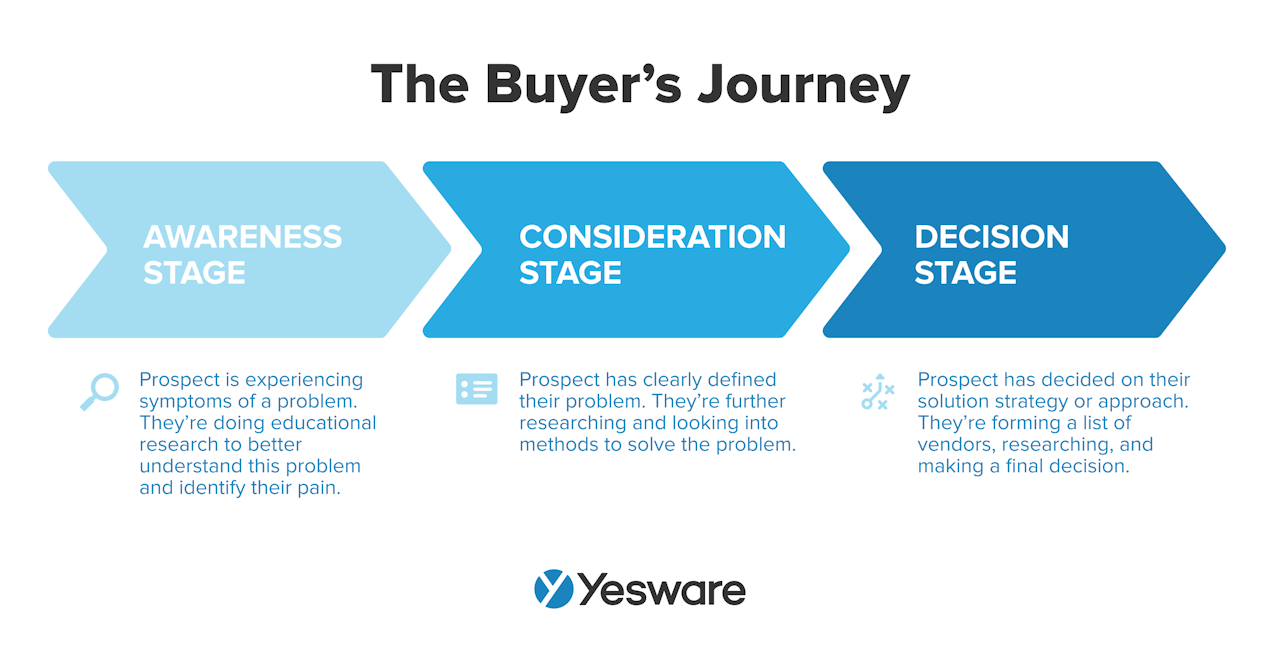 It’s important that you create your sales strategy with the ultimate goal being to proactively meet prospects’ needs throughout their journey to purchase.
It’s important that you create your sales strategy with the ultimate goal being to proactively meet prospects’ needs throughout their journey to purchase.
Of course, that’s not to say that your sales strategy should ignore the needs, goals, and resources available to your own business — sales strategies are ultimately designed to benefit the teams that create them. But the most successful ones are written from the mindset of aiming to serve the customer, rather than aiming to meet quota.
With that in mind, a high-quality B2B sales strategy should be an actionable, repeatable, and scalable process; in other words, successful execution of the strategy should produce tangible, predictable impacts on your bottom line.
Why Is a B2B Sales Strategy Important?
It’s been well-known for a while that the internet permanently changed what it means to sell products. In today’s digital world, where access to information is virtually limitless and instantaneous, buyers can easily navigate most buying decisions without any input from a sales team.
In fact, current data shows that about 52% of buyer decisions are made before ever making contact with a sales team.
Compounding this challenge is the fact that buyers today are not only more independent but also more skeptical and more fastidious — both of which have increased the length of the B2B sales cycle by 22% in the last five years.
A targeted sales strategy can mitigate these issues. It allows salespeople to design a proactive plan for meeting buyers where they are instead of waiting to react (at which point decisions have usually already been made).
In addition to providing sales reps the opportunity to proactively meet buyers’ needs, there are several other benefits to developing a sales strategy.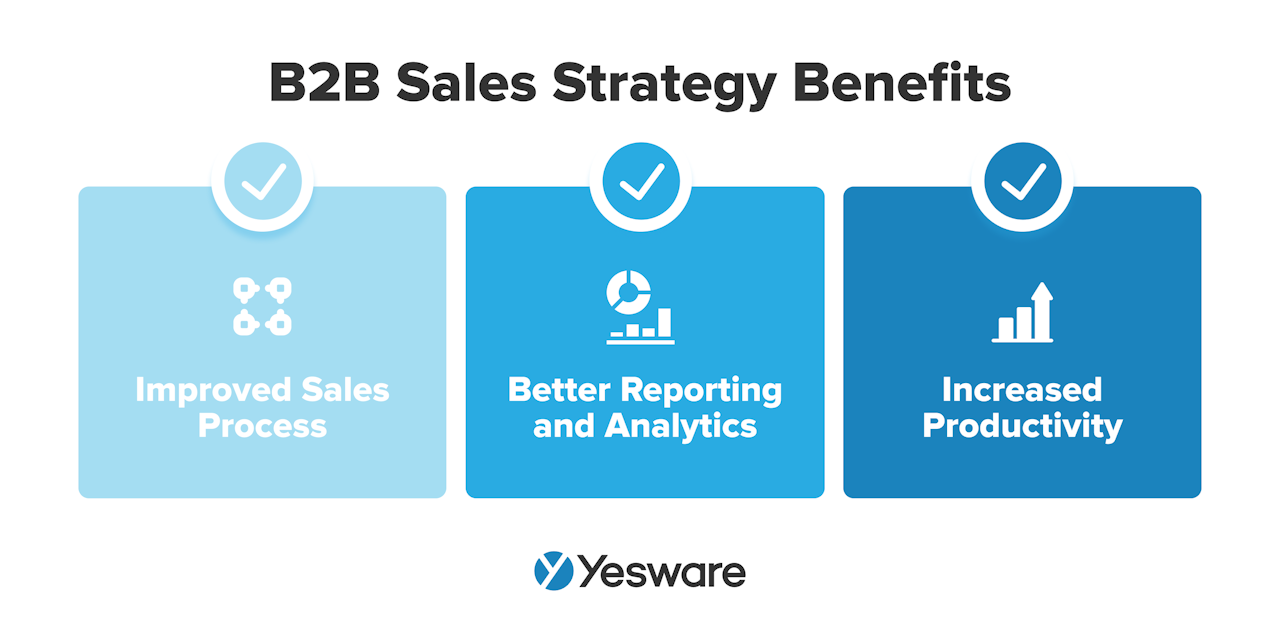 Each component of the B2B sales strategy improves your funnel’s revenue-generating capacity. It enables sales and marketing to optimize their outreach efforts to generate and maintain new and repeat business.
Each component of the B2B sales strategy improves your funnel’s revenue-generating capacity. It enables sales and marketing to optimize their outreach efforts to generate and maintain new and repeat business.
A well-designed sales strategy allows your sales team to make the strongest possible case for your product’s unique selling points.
How to Build a B2B Sales Strategy
Developing and implementing a new B2B sales strategy isn’t light work — not if you want it to be successful, at least.
Although quite a bit of effort is often involved, building a B2B sales strategy should be an intentional, thorough, and methodical process. The following considerations will help you get started.
Market Research
As is the case with many things in sales, the first step to success is research.
Before you sit down to build your B2B sales strategy, make sure everyone on your team has a solid understanding of the dynamics at play in the overall market.
Market trends and predictions will all have an influence on the sales process (even if it’s only a subconscious effect), so sales reps need to be intentional about keeping their finger on the pulse of what’s happening in the market.
Value Proposition
It’s also important to ensure that each member of your team can succinctly describe the value proposition of your offer. 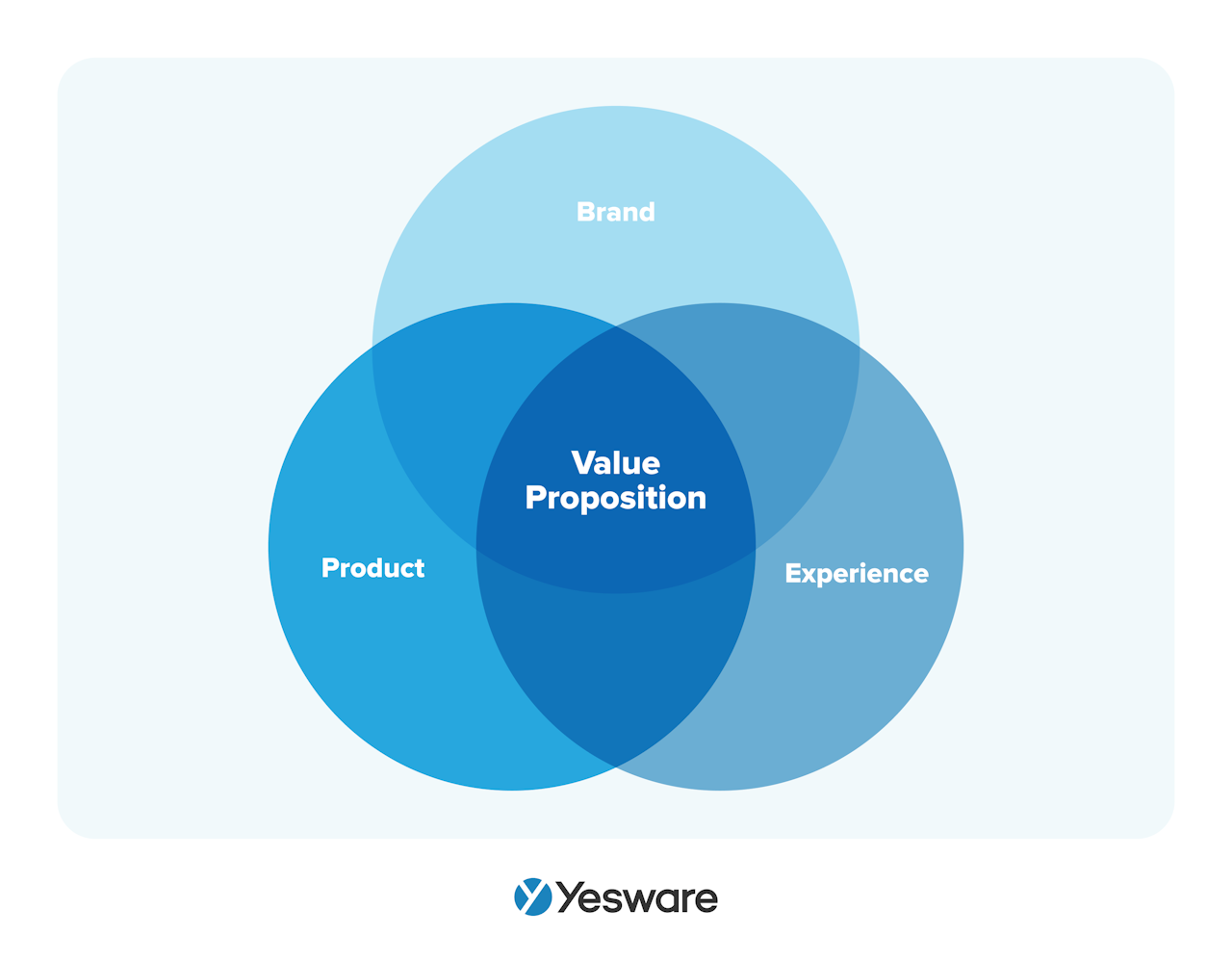 The value proposition is built from your product’s unique selling proposition (USP).
The value proposition is built from your product’s unique selling proposition (USP). 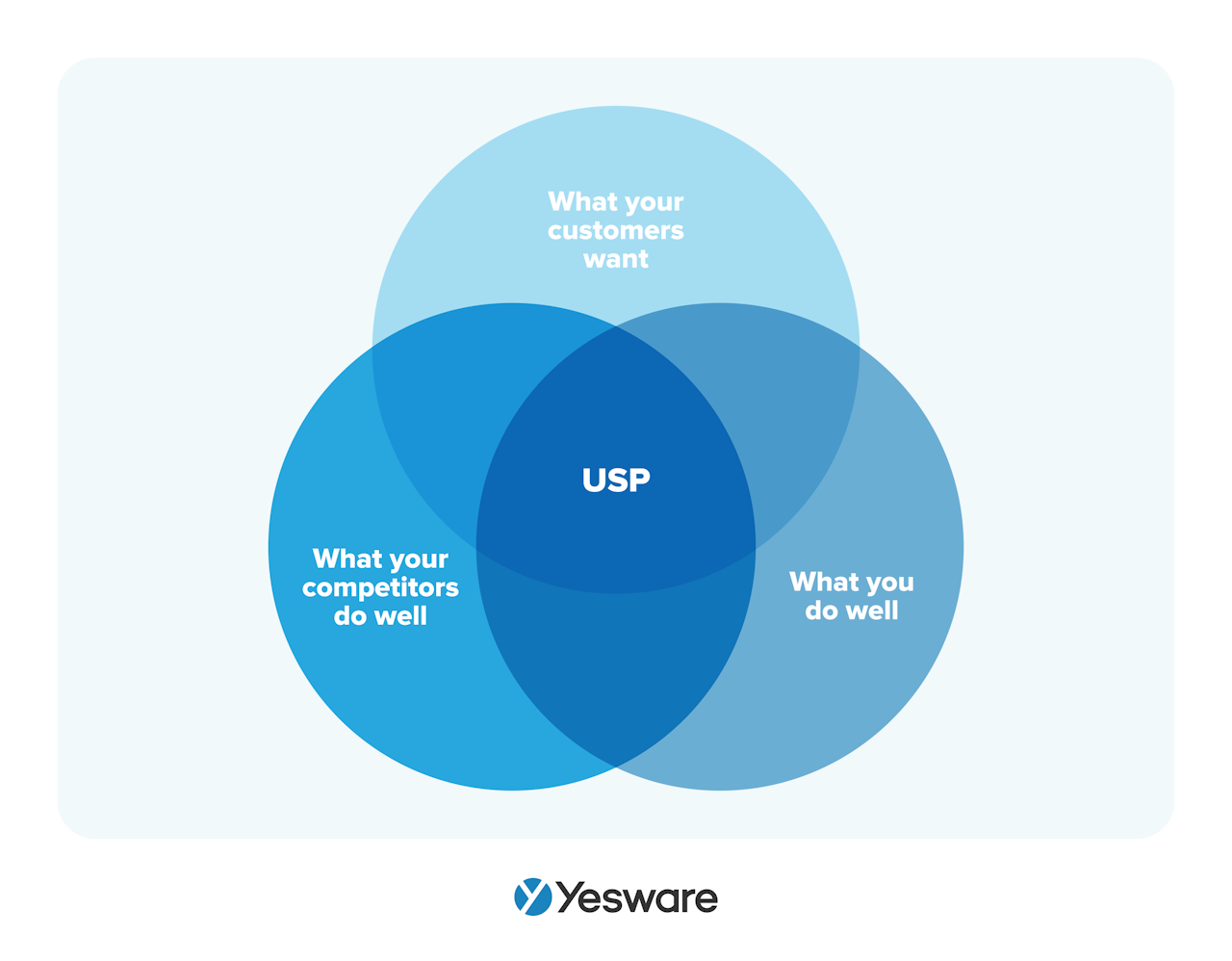 This is another key component that runs in the background of your B2B sales strategy, so make sure you schedule time to regularly review your understanding of the value proposition that your offer brings to the table.
This is another key component that runs in the background of your B2B sales strategy, so make sure you schedule time to regularly review your understanding of the value proposition that your offer brings to the table.
Sales Team Training
Although sales training gets a bad reputation for being boring and even a waste of time, it’s one of the most impactful things you can offer your team — as long as you get it right.
There are a few best practices to keep in mind when designing a sales training program. 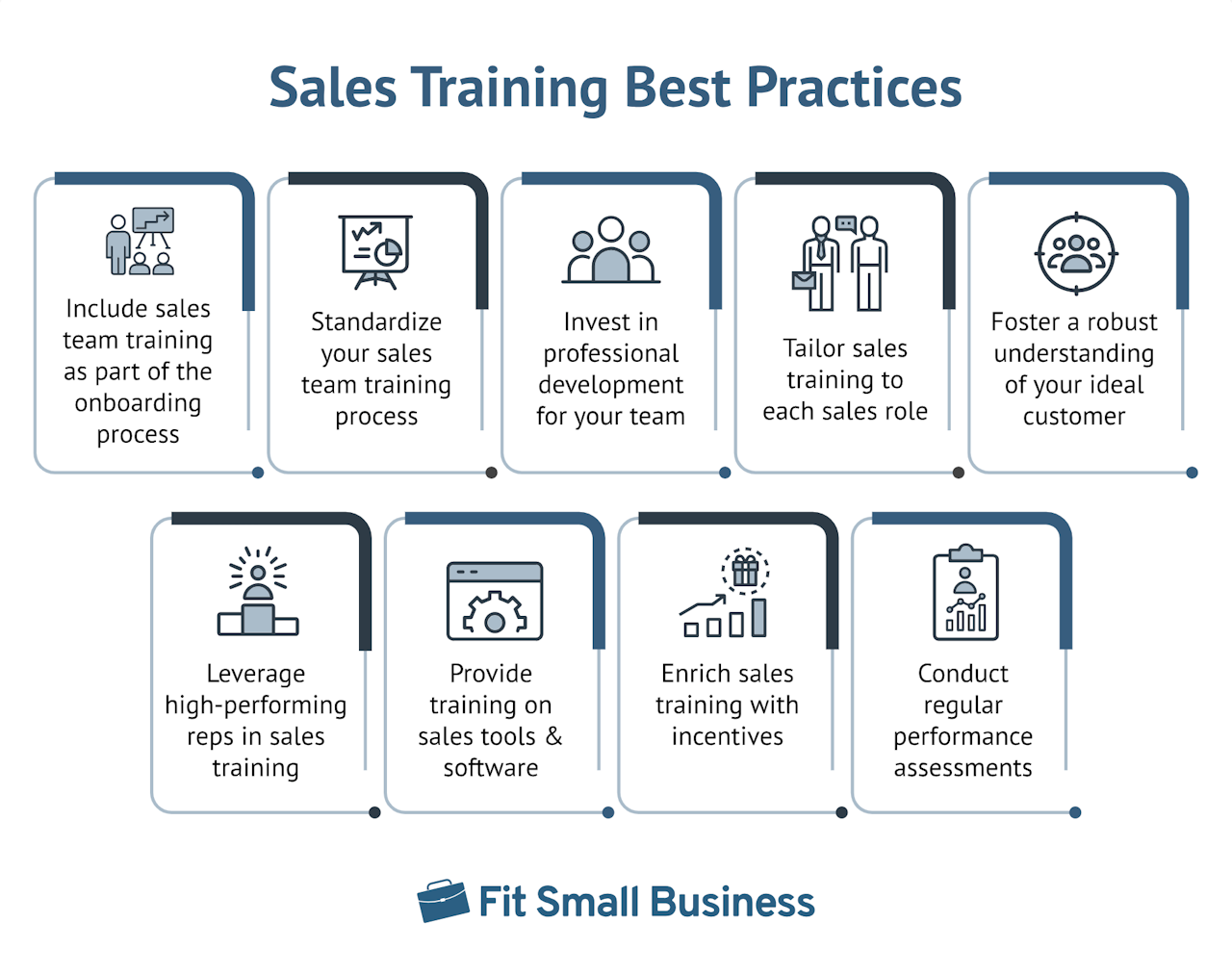 The better your sales reps understand your sales strategy, the more invested they’ll become in executing it successfully. And, if you can manage it, sales training is best when you combine it with sales coaching.
The better your sales reps understand your sales strategy, the more invested they’ll become in executing it successfully. And, if you can manage it, sales training is best when you combine it with sales coaching.
Sales Collateral
Sales collateral is an umbrella term that encompasses any document, content, or other resource that assists reps in the sales process and helps move leads through the sales funnel.
There are specific types of sales collateral that work best for each stage of the funnel, whether that be customer-facing (e.g., blog posts, case studies) or internal (e.g., call scripts, battle cards). 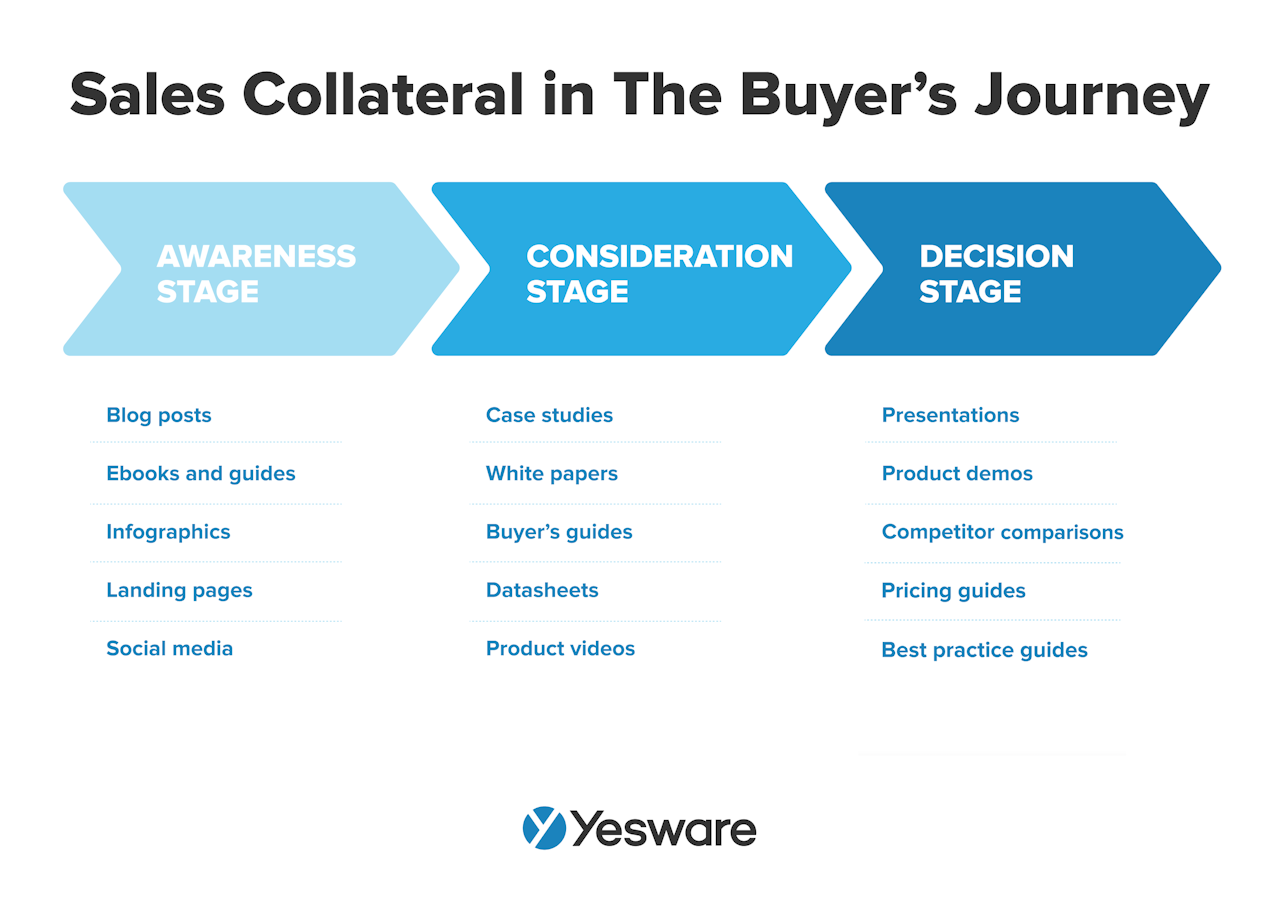 Creating and organizing sales collateral is a huge part of designing a B2B sales strategy. A sales enablement platform can be a huge asset when it comes to storing and cataloging your many resources.
Creating and organizing sales collateral is a huge part of designing a B2B sales strategy. A sales enablement platform can be a huge asset when it comes to storing and cataloging your many resources.
Lead Generation Strategy
With nearly two-thirds of marketers and one-third of sales reps reporting lead generation as their biggest challenge, every team that’s deliberately creating a B2B sales strategy needs to take this important practice seriously, and design intentional processes to support it.
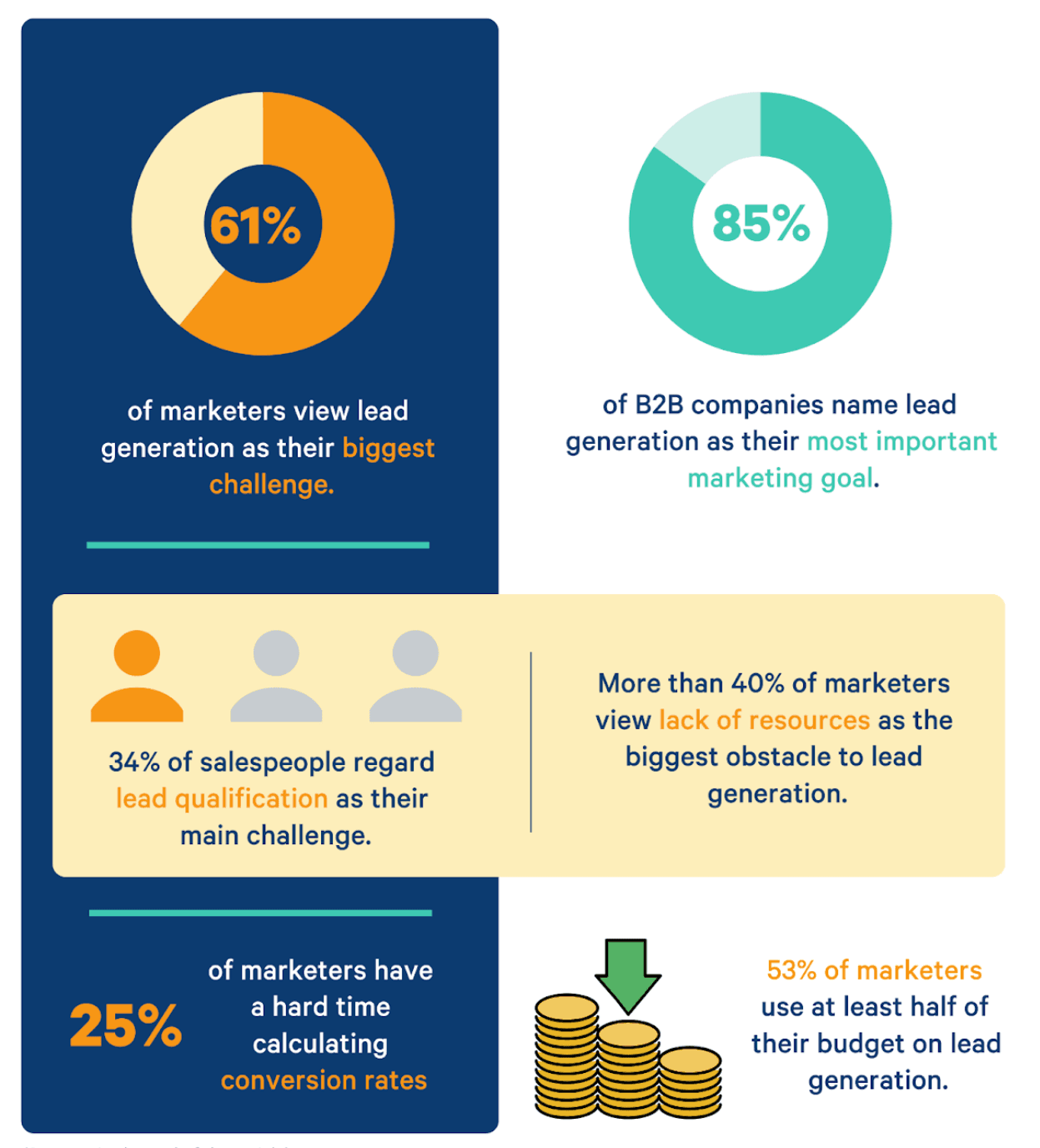
In truth, lead generation is about a lot more than just finding enough leads to achieve your conversion rate.
It’s okay if your lead generation strategy requires some trial and error; as with every other process in sales, it’s important to collect data on your strategies and their results, and make adjustments accordingly as you go.
Lead Qualification
Lead qualification is another important sub-process within your B2B sales strategy, and should be well-defined and carefully planned.
One easily standardized lead qualification model that sales and marketing use to efficiently qualify leads as they enter the pipeline is lead scoring.
Lead scoring is so effective because it’s flexible and can be adapted to fit the needs and behaviors of just about any sales team and target market. Some teams, for example, assign points for attributes and behaviors. 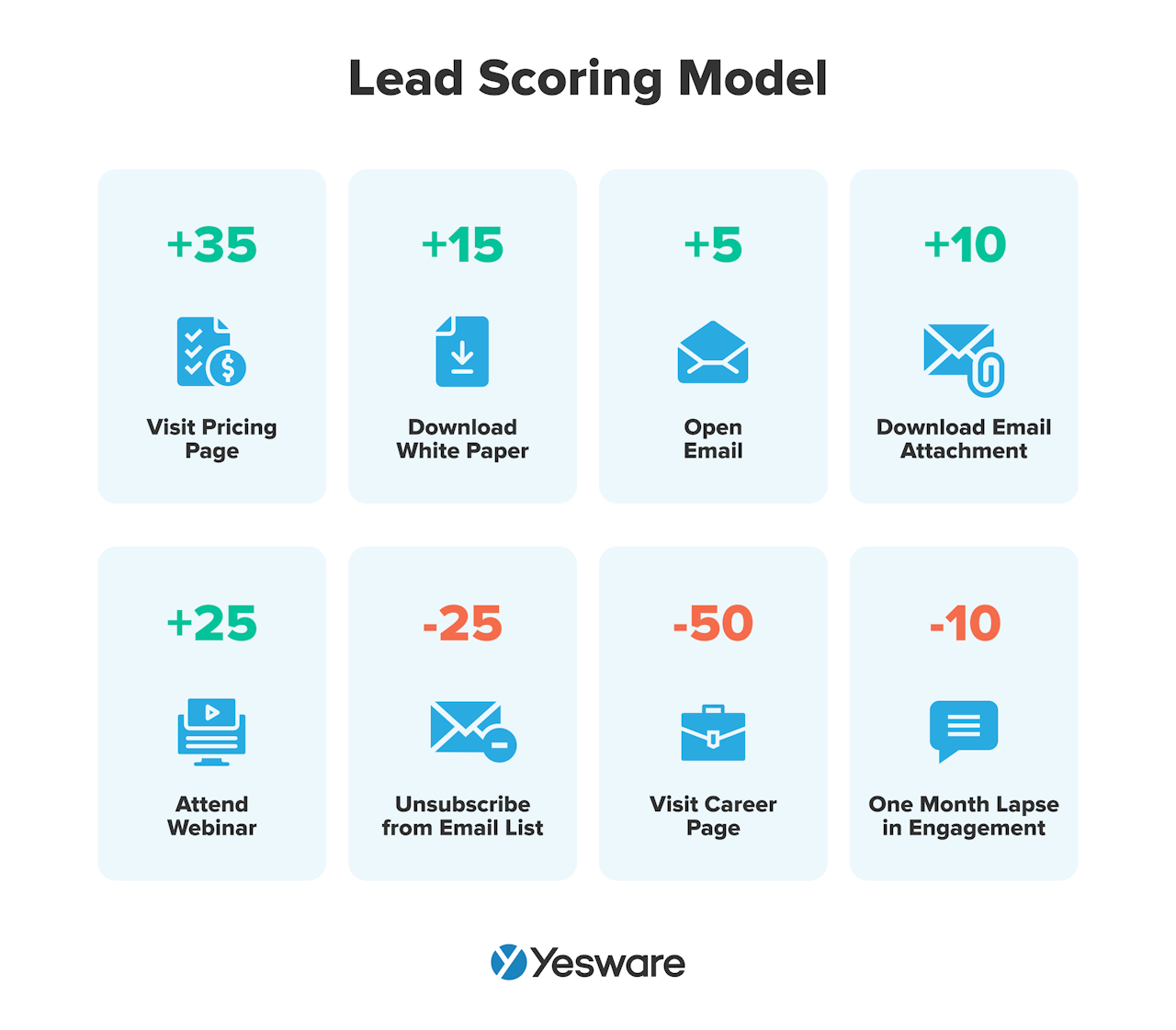
There are also a number of lead qualification frameworks that many teams find helpful as they navigate the many factors that determine whether or not a lead is a good fit and should become a marketing qualified lead (MQL) or, later, a sales qualified lead (SQL).
One well-known model is called BANT, which assesses a lead’s budget, authority (decision-making power), need (how much they need your solution), and timeline (how urgently they need a solution). 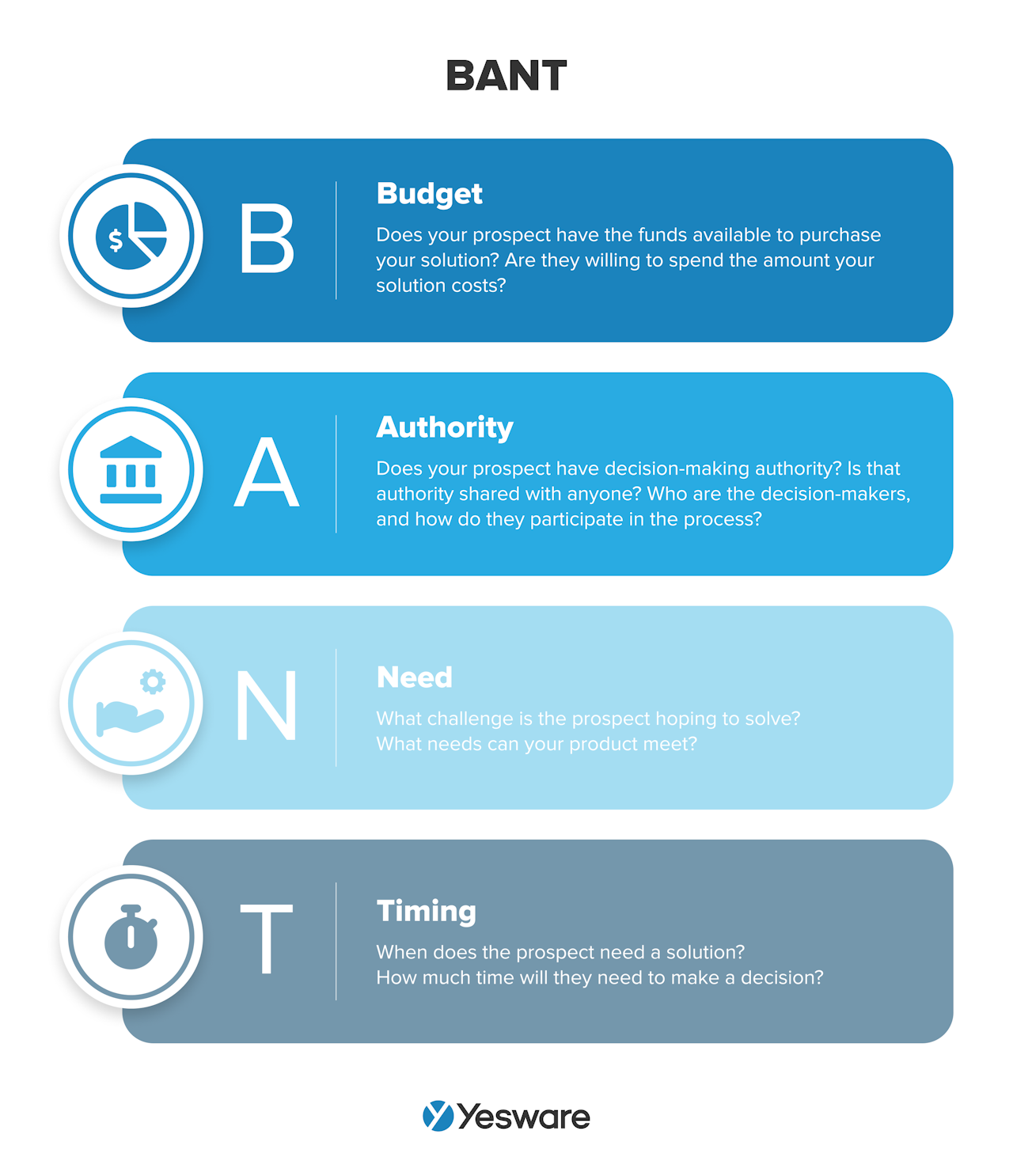 Other frameworks include MEDDIC (Metrics, Economic Buyer, Decision criteria, Decision process, Identify pain, Champion), CHAMP (Challenges, Authority, Money, Prioritization), and FAINT (Funds, Authority, Interest, Need, Timing).
Other frameworks include MEDDIC (Metrics, Economic Buyer, Decision criteria, Decision process, Identify pain, Champion), CHAMP (Challenges, Authority, Money, Prioritization), and FAINT (Funds, Authority, Interest, Need, Timing).
Personalized Sales Outreach
Today’s B2B buyer has more than just a preference for personalization — with more than half of buyers willing to abandon a brand they like due to impersonal experience, the data shows that personalization is now a full-blown expectation. 
This is why sales and marketing alignment (more on that in the next section) is so important. These two teams need to work together regularly to ensure their campaigns and sales collateral are meeting the unique needs of the target buyer.
Sales and Marketing Alignment
The nuts and bolts of your B2B sales strategy will outline the steps your sales team needs to take to meet their goals. However, even more important to its success than the specifics of your sales strategy is the careful alignment of your sales and marketing teams.
Teams with well-aligned sales and marketing teams enjoy:
- 20% annual growth rate
- 38% higher sales wins
- 36% higher customer retention rate
Aligning sales and marketing also increases annual company revenue, improves brand awareness, and increases average deal size.
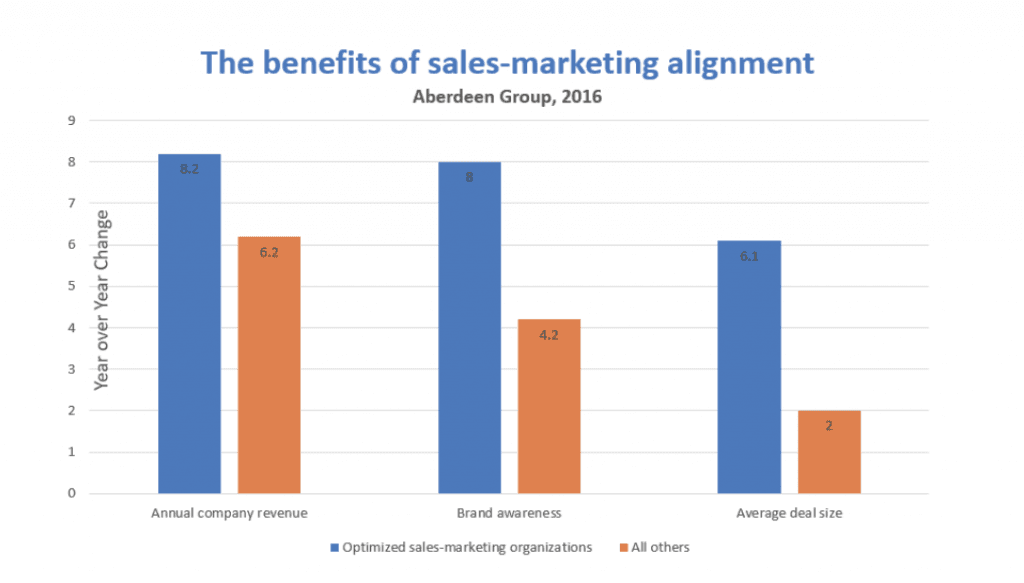
On the other hand, a sales strategy created without collaboration between these two teams is almost certain to fail.
B2B Sales Enablement Tools
There are a number of tools in the sales enablement space that can support and improve your B2B sales strategy. The software you choose should allow all stakeholders in the sales process the ability to peek into the sales process, from the very beginning to the very end.
Here are a few of our favorites.
- Cloze: Cloze ensures alignment between board-level revenue strategy, sales strategy, and tactical execution. It helps you optimize conversion at every stage with buyer alignment and relevant messaging. It also offers training and coaching programs based on the analytics of your execution.
- Fision: Fision helps strengthen the bond between sales and marketing. It gives reps 24/7 access to selling materials and the ability to customize brand-compliant material with a template builder.
- MindTickle: MindTickle helps teams identify winning rep behavior and conversation. This platform leverages gamification and microlearning tools to make optimizing the sales process fun and engaging.
Measurement Metrics
The sales metrics and sales KPIs that you focus on will ultimately depend on the desired outcomes of your B2B sales strategy.
Some strategies, for example, may focus more heavily on the front end of the pipeline, where customer acquisition cost may be important.
Other strategies are more focused on sales rep behavior, where sales productivity metrics come into play.
Here are several metrics to consider that will help you measure the effectiveness of your B2B sales strategies:
- Sales productivity metrics (e.g., number of cold calls, number of follow-ups, number of demos)
- New leads by source
- Estimated revenue by lead source
- Average lead response time
- Closed won opportunities (by month and/or by quarter)
- Sales pipeline velocity
- Win rate
- Average deal size
- Customer acquisition cost (CAC)
- Churn rate
- MQL-to-SQL conversion rate
- Average contract value (ACV)
- Annual recurring revenue (ARR) and/or monthly recurring revenue (MRR)
- Lead-to-opportunity ratio
- Win-loss ratios
Tip: Looking to grow your B2B sales team? Grab our guide below.
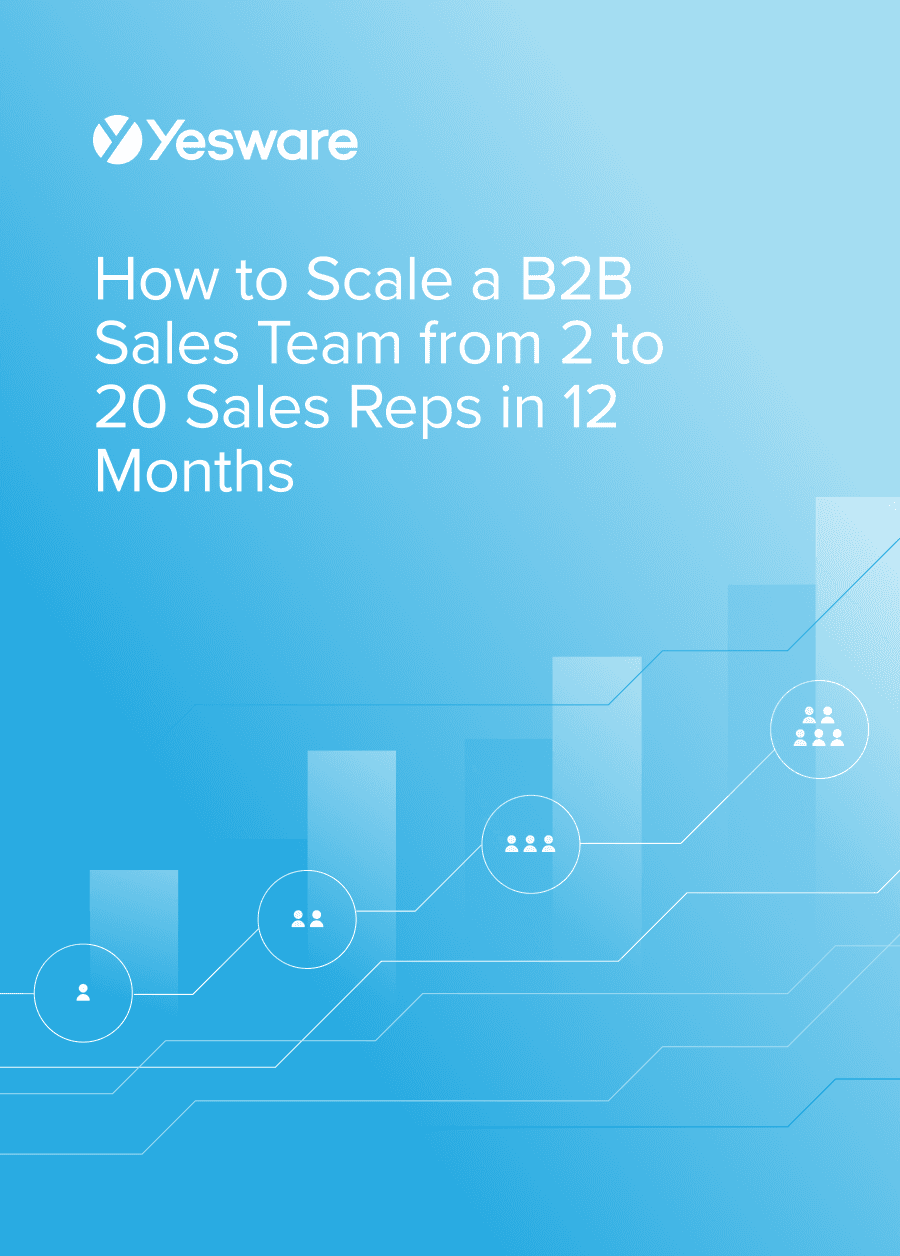 How to Scale a B2B Sales Team from 2 to 20 Sales Reps in 12 MonthsA step-by-step blueprint and action plan for growing a sales team in a way that maximizes profitability.
How to Scale a B2B Sales Team from 2 to 20 Sales Reps in 12 MonthsA step-by-step blueprint and action plan for growing a sales team in a way that maximizes profitability.
Common B2B Sales Strategies
While it’s true that the best B2B sales strategies are tailor-made for the companies deploying them, there are a few well-known sales strategies that almost every successful company draws from as they create their own.
Before your teams collaborate to design your company’s B2B sales strategy, make sure your sales and marketing departments have a thorough, shared understanding of the following:
- Your current sales process and the resources it requires
- The specifics of your target market, including their content/engagement preferences
- How many decision-makers are involved in the purchase process, and how they prefer to interact
- How long you can afford to stretch a sales cycle as you optimize your new sales strategy
Once your teams are on the same page about these details, you can start looking more specifically at how you will design the various components of your sales strategy. There are several well-known, data-backed B2B sales strategies that can help you get the ball rolling as you create your own.
Solution Selling
In a solution selling strategy, the salesperson makes a concerted effort to focus the conversation on the prospect’s needs and challenges.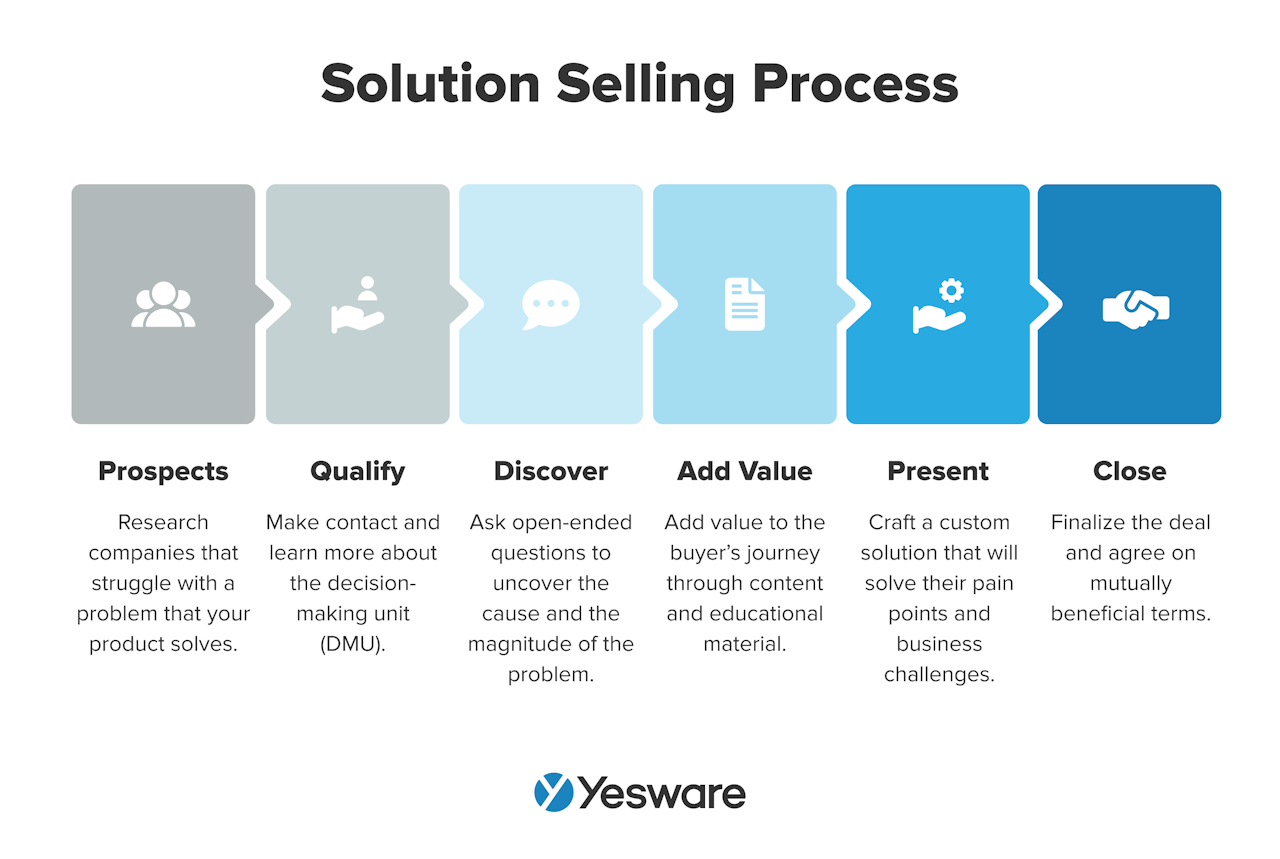 In other words, a solution selling approach advises reps to stay far away from the traditional “features and benefits” spiel and instead prioritizes a prospect-focused conversation that uncovers their deepest pain points. This kind of insight then allows sales reps to create a custom pitch tailoring the solution around the prospect’s needs.
In other words, a solution selling approach advises reps to stay far away from the traditional “features and benefits” spiel and instead prioritizes a prospect-focused conversation that uncovers their deepest pain points. This kind of insight then allows sales reps to create a custom pitch tailoring the solution around the prospect’s needs.
Sales reps using a solution selling strategy should plan to spend a lot of time educating their prospects. This takes some practice and mindset work, but it pays off.
Ultimately, the solution selling strategy delivers because it places the seller in the role of trusted consultant to the prospect. This helps the prospect feel valued and cared for throughout the sales process.
Account-Based Selling
Account-based selling (sometimes also known as account-based marketing or ABM) is one of the most popular B2B selling strategies out there. In fact, it’s more popular than ever — in 2019, Gartner saw a 50% increase in $ 10M+ revenue companies adopting this strategy over a period of just two years. Nearly 75% of these top-performing companies use some kind of account-based selling strategy.
In account-based selling, the sales team treats every prospective company as its own market of one. It is a multi-touch, multi-channel strategy that requires targeted, strategic collaboration with a variety of stakeholders and decision-makers within the target company. 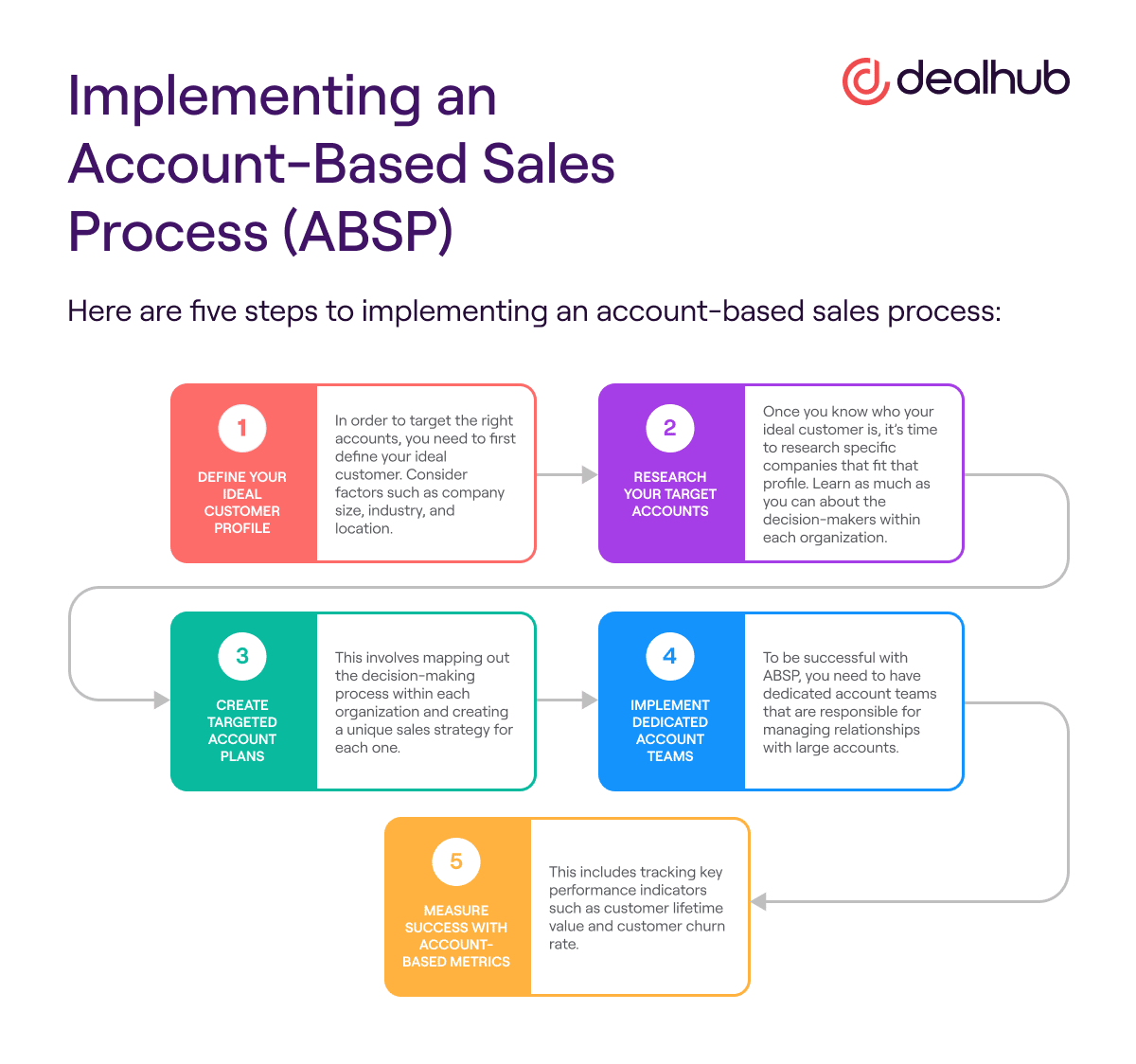 To implement account-based selling, you need robust data from either your existing customer base or your target audience; you’ll use this to identify common characteristics among your target accounts and create custom value offerings for each.
To implement account-based selling, you need robust data from either your existing customer base or your target audience; you’ll use this to identify common characteristics among your target accounts and create custom value offerings for each.
This strategy is almost all prospecting — sales reps’ research and qualifying questions provide the scaffolds for the little bit of pitching that eventually takes place as part of this B2B sales strategy.
Account-based selling works best for companies that have particularly long or complex sales cycles or ones that typically require input from several stakeholders. Like strategic selling, account-based selling gives sellers the opportunity to address several unique selling propositions based on the different buyer personas inherently present in the process.
Social Selling
For as much popularity and success as account-based selling enjoys, there is perhaps no more relevant and pervasive sales strategy today than social selling.
A social selling strategy allows marketers and sales reps to leverage the power of social media platforms like LinkedIn, Facebook, and Twitter to:
- Establish their company as a trusted expert and thought leader in the industry
- Attract, converse with, and provide value to prospects and customers
- Build long-term relationships with prospects and colleagues
With nearly 70% of B2B customers reporting that they use social media to research buying decisions, nearly all companies will benefit from adding a social selling component to their B2B sales strategy.
Social selling is so effective because it prioritizes the relationship over the sale. It gives prospects and companies the forum to connect in authentic conversation. The power of social proof is evident: 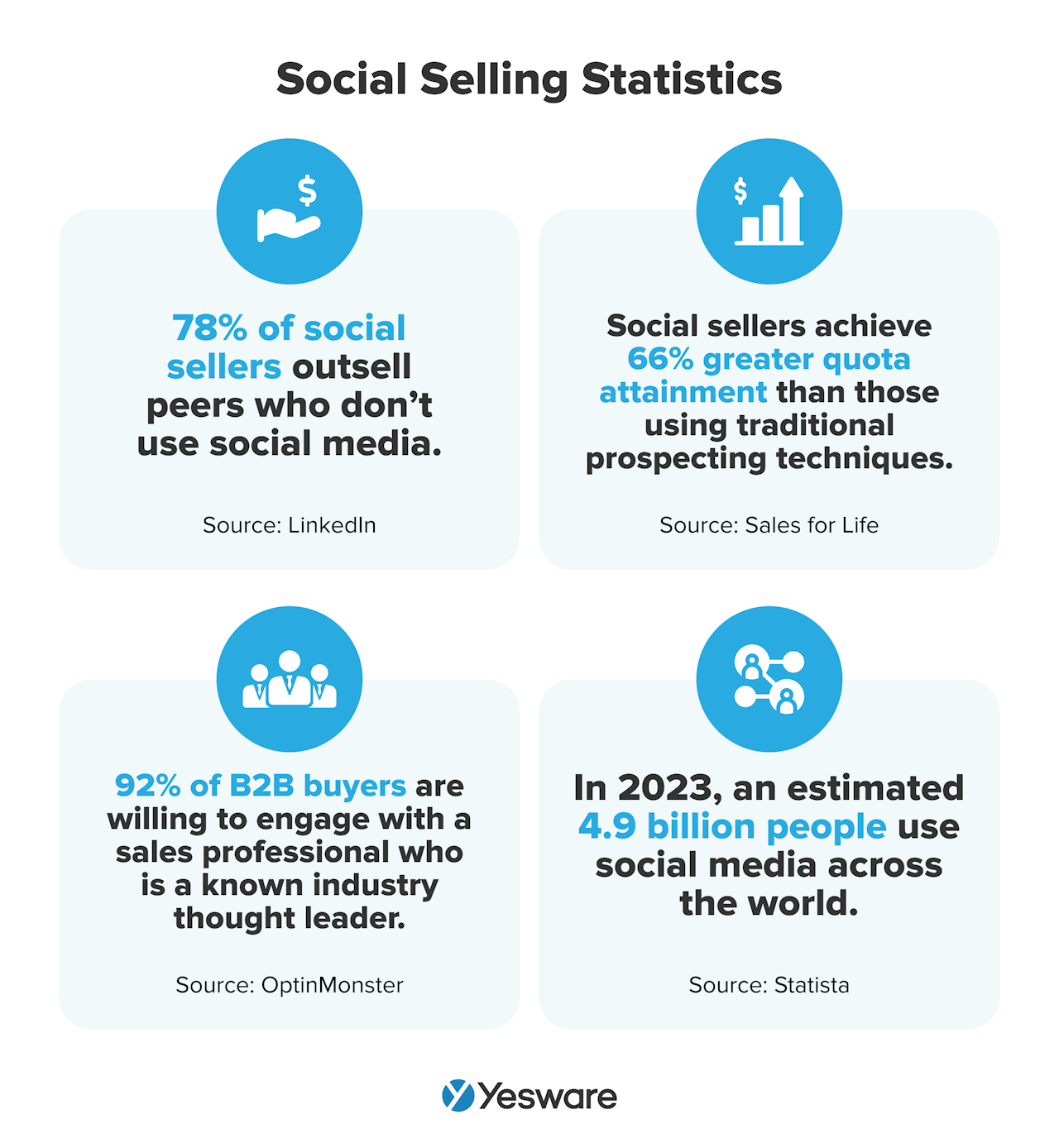 The better the conversation, the higher the conversion rate.
The better the conversation, the higher the conversion rate.
Strategic Selling
Strategic selling is an approach that requires the sales rep to extend their research far into the organization chart of the prospect company.
Usually starting with just a single point of contact, the sales rep must then work to identify and research several additional potential contacts within the organization. Ideally, these will be people of varied roles and levels of influence within the purchase decision.
Once the list of contacts has been established, the rep works to learn about each contact’s influencing factors and develops individualized pitches to meet their various needs.
The strategic selling strategy works because it allows sales reps to display the full range of your product’s capabilities by pitching them all to different people. Once each contact feels assured that your product can solve their individual pain point, they make easy work of convincing one another that your product is a worthy investment.
Does your team have a B2B sales strategy? How effective is it? What steps can you take today to further optimize it?
This guide was updated on September 26, 2023.
Get sales tips and strategies delivered straight to your inbox.
Yesware will help you generate more sales right from your inbox. Try our Outlook add-on or Gmail Chrome extension for free, forever!
Related Articles
Casey O'Connor
Casey O'Connor
Casey O'Connor
Sales, deal management, and communication tips for your inbox

